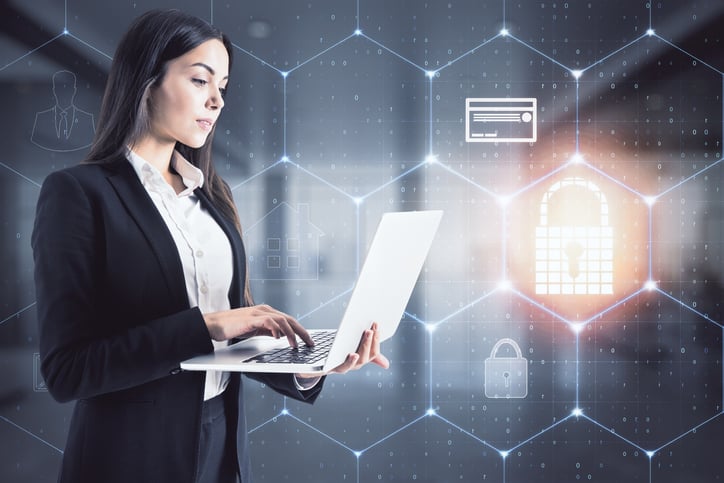Here’s the bad news: cybercrime is a growing threat and criminals are getting away with millions of dollars. Even worse, many criminals are investing their gains into new technology.
The good news is that there are strategies and lessons to learn from recent history, which can be deployed to protect your business. Here are the most important trends we are looking to address for our customers in the coming year.
Expanding Cyber-Attack Targets (Remote Work, IoT, Supply Chain)
The Internet of Things has completely changed the dynamics and number of targets for cyber-attack. With an estimated 50 billion connected devices in the world, hackers have a multitude of options to breach cyber-defense and exfiltrate data. SonicWall estimates there were as many as 32.2 million IoT attacks in the past year.
And as organizations are increasingly interconnected across supply chains, you need to be alert to all kinds of new threat vectors. We recommend conducting a security audit to identify and assess your exposure to IoT attacks.
Due to bugs and vulnerabilities in most systems, security auditing plays an important role in determining any exploitable weaknesses that puts your data at risk. You can then understand your attack surface and deploy scanning technologies, analytics, audits, incident alert tools and diagnostic tools to defend against attacks.
Ransomware Continues to Evolve
Ransomware is now an industry. Ransomware operators made at least $350 million in ransom payments in 2020 and there were 304.6 million ransomware attacks in just the first half of 2021, according to SonicWall.
Ransomware is not a new phenomenon, but its use has grown exponentially, and has led to the development of the term ‘Ransomware as a Service’ (RaaS), which is a subscription-based model that makes it possible for more criminals to use proven ransomware tools to execute attacks.
Ransomware has been one of the most dangerous threats to any organization’s data security, and this will not change anytime soon. For example, gangs like REvil, DarkSide (which hit the Colonial Pipeline) have moved to an affiliate model. One organization supplies tools and playbooks, while franchisees use these services to carry out the attacks, forwarding a percentage of the paid ransom back to the creator of the program. Our Client Action Team (CAP) responds to several ransomware incidents each year, which involves recovery and remediation to try to restore systems following such an attack.
Increased Use of Multi-Factor Authentication
Many IT departments are reluctant to deploy MFA because it can annoy or inconvenience your own staff. But getting MFA deployed across an organization is now a critical task.
To understand why, consider that tens of millions of Facebook, Instagram and LinkedIn profiles have been exposed by a company you’ve probably never heard of: Socialarks. Due to an unsecured database, the quickly growing Chinese social media management company leaked personally identifiable information (PII) of some 214 million social media users, some of whom were major influencers and celebrities.
What makes this even worse is that 72 percent of people reuse passwords for their personal accounts, according to a recent HYPR study. While passwords remain a standard for cybersecurity best practices, more companies will adopt multi-factor authentication (MFA) as an additional defense against data breaches and malicious attacks in 2022.
The use of MFA is critical to security, but Microsoft recently urged users to move away from phone-based MFA (when the one-time passcode is sent to your phone via SMS text) due to the weak security among telephone networks today. SMS-based messages aren’t encrypted, meaning attackers can gain access to these plain text codes. This means companies should choose more secure MFA methods to implement, like Google Authenticator or Microsoft Authenticator.
The Rise of Autofill-Assisted Fraud and New Attack Vectors
Cybercriminals are finding new ways to make off with your personal information. For example, several criminal organizations have recognized that driver’s license numbers are generally based on a combination of a person’s name and date of birth. Auto insurance companies use that formula to help online shoppers by pre-populating driver’s license numbers based on users entering just a few data points. Using data pilfered from other sources, criminal actors can leverage this user-friendly enhancement to steal driver’s license information from car insurance quotation services.
If your company is implementing new online tools for the convenience of your customers, also be aware that these tools can make a hacker’s task easier as well.
Increasing Need for Better Information
Many IT executives don’t have a full asset inventory or a complete list of all third-party suppliers and cloud applications used within their organization. This results in weakened risk assessment programs, since they’re often based on inventories that lack a full and clear picture of the threat landscape.
Security automation and real-time data visibility within organizations not only strengthens your ability to mitigate data theft and breaches, but also heightens operational efficiency and overall resilience to cybersecurity threats.
To address the needs and concerns described here, we prescribe several remedies. With the amount of data multiplying every day, automating as many IT processes as possible is more imperative than ever. The good news is that it is now possible for small and medium-sized businesses to access technology such as Security Information and Event Management (SIEM). SIEM technology collects and analyzes information from network devices, endpoint logs and threat intelligence feeds, identifying security incidents, policy violations, fraudulent activity and other threats.
Also, do not neglect to educate your staff in cybersecurity. A threat can’t be avoided if it isn’t recognized and educating your staff to identify threats on their own can significantly reduce the likelihood of a data breach.
Lastly, we believe it is imperative to hire a trusted partner to help you manage the quickly evolving world of cybersecurity. At least 92 percent of businesses are not ready to address their security needs, according to Verizon’s Breach Investigations Report. We can help you get ahead of these threats and growing requirements for cybersecurity readiness. If you’d like assistance addressing cybersecurity and data privacy issues, reach out to us today for a cybersecurity risk assessment.










